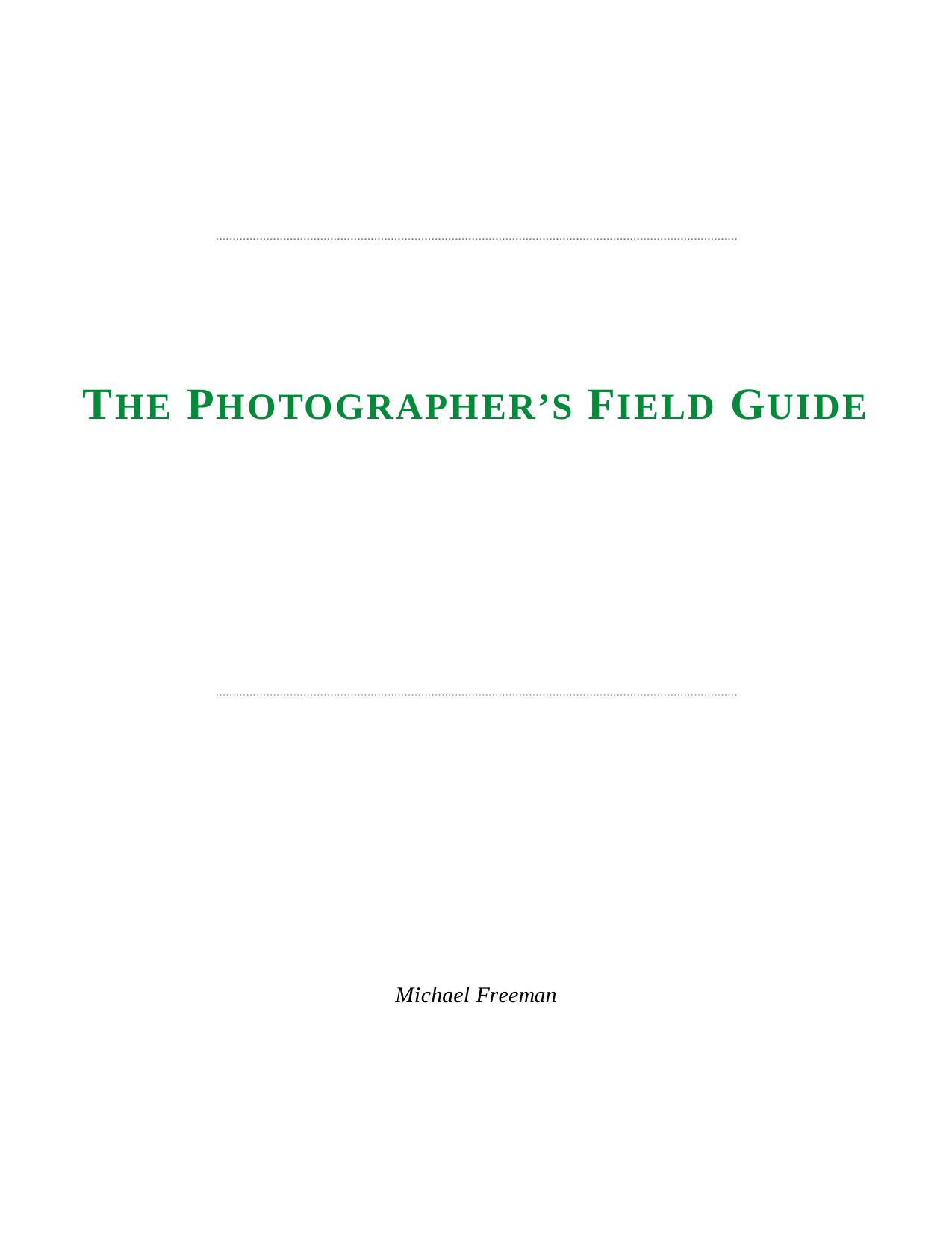The Photographer's Field Guide by Michael Freeman

Author:Michael Freeman
Language: eng
Format: epub, pdf
Tags: Photography
Publisher: The Ilex Press Ltd
Published: 2011-05-31T16:00:00+00:00
Fireworks
To take a wide-angle photograph of fireworks in a setting, use the start of the display to judge the height and position of the bursts, and frame the shot accordingly. With the camera locked on a tripod, vary the exposure times to include single and multiple bursts. This shot was taken in New York at the centenary celebrations of the Statue of Liberty. The lens’s focal length was 35mm equivalent (slightly wider than standard), and ISO set to 100 for a noise-free image.
Using flash
Whether built-in or as a unit attached to the camera’s hot-shoe (not all cameras have this connection), on-camera flash units are designed for compactness and ease of use; with these as priorities, quality and variety of lighting take second place. However, having said that, some form of light is essential in all forms of photography, and if nothing else is available then on-camera flash at least enables the photographer to record an image, albeit often producing a somewhat unsubtle result. A typical, purely flash-lit photograph tends to feature flat illumination on the main subject and a dark background. The result is clear, sharp, and with good color separation, but is generally lacking in ambience. Typical good uses of full-on flash are close-ups of colorful subjects, as these can benefit from the crisp precision and strong colors afforded by flash illumination.
To help avoid the flat, often harsh, results of built-in flash, you really need to invest in a detachable flash unit that has a swiveling head. Fortunately, such units are relatively compact and lightweight, and so shouldn’t add too much bulk to your equipment. The significance of the swiveling head is that it allows you to point the flash away from the subject, toward a pale ceiling or wall. In this way, the subject is lit from the light reflecting off a much larger surface, creating a softer illumination and less harsh shadows. This technique is known as “bounce” flash. Another alternative is to fit a translucent plastic attachment to the flash head, which will help diffuse the light from the flash, again creating a softer result. Finally, most DSLRs will allow you to adjust the output of either the built-in flash or a flash unit. While this means colors are not as vibrant, it will provide you with a less brightly lit image, which can help soften a person’s features.
Download
The Photographer's Field Guide by Michael Freeman.pdf
This site does not store any files on its server. We only index and link to content provided by other sites. Please contact the content providers to delete copyright contents if any and email us, we'll remove relevant links or contents immediately.
| Color | Darkroom & Processing |
| Digital Editing | Equipment |
| Flash Photography | Handbooks & Manuals |
| Lighting | Reference |
Shoot Sexy by Ryan Armbrust(17151)
Portrait Mastery in Black & White: Learn the Signature Style of a Legendary Photographer by Tim Kelly(16491)
Adobe Camera Raw For Digital Photographers Only by Rob Sheppard(16394)
Photographically Speaking: A Deeper Look at Creating Stronger Images (Eva Spring's Library) by David duChemin(16164)
Bombshells: Glamour Girls of a Lifetime by Sullivan Steve(13119)
Art Nude Photography Explained: How to Photograph and Understand Great Art Nude Images by Simon Walden(12353)
Perfect Rhythm by Jae(4628)
Pillow Thoughts by Courtney Peppernell(3412)
The Book of Joy by Dalai Lama(3233)
Good by S. Walden(2920)
The Pixar Touch by David A. Price(2744)
Fantastic Beasts: The Crimes of Grindelwald by J. K. Rowling(2549)
A Dictionary of Sociology by Unknown(2521)
Humans of New York by Brandon Stanton(2382)
Read This If You Want to Take Great Photographs by Carroll Henry(2307)
Stacked Decks by The Rotenberg Collection(2281)
On Photography by Susan Sontag(2136)
Photographic Guide to the Birds of Indonesia by Strange Morten;(2091)
Insomniac City by Bill Hayes(2087)
